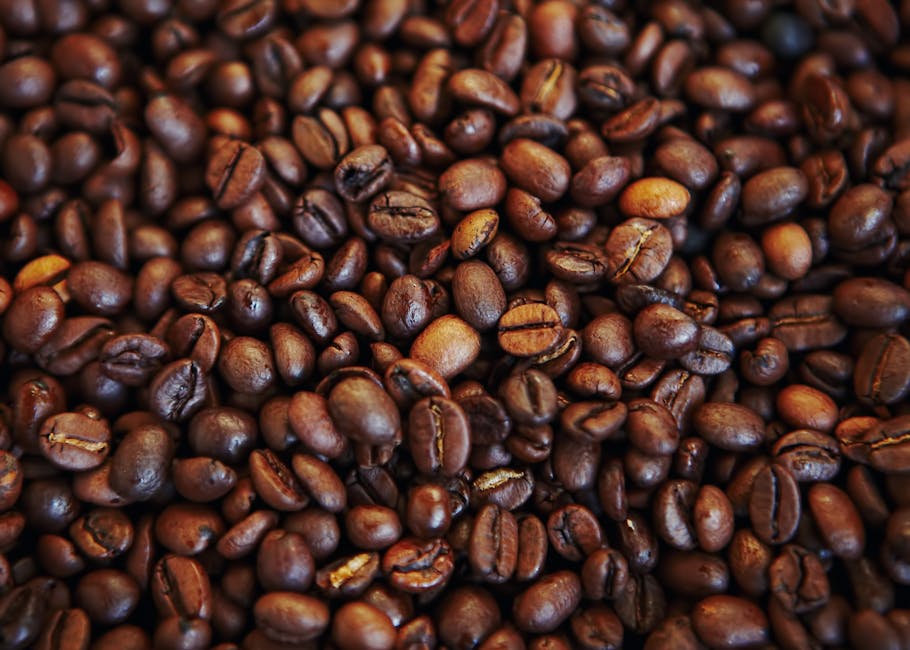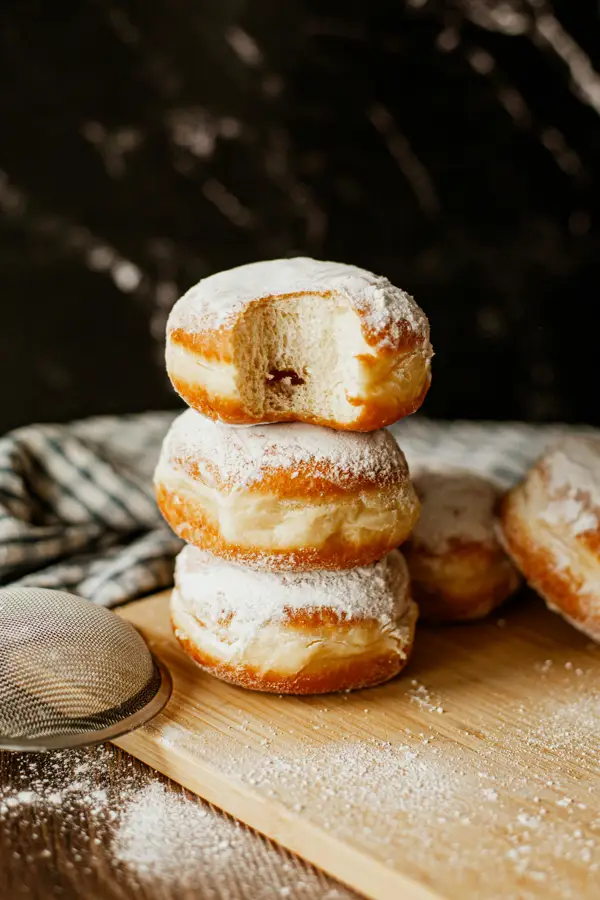Cauliflower, a cruciferous vegetable boasting a creamy white head, has a surprisingly rich and complex history, far exceeding its current status as a common pantry staple. While pinpointing its exact origins is difficult, evidence suggests its cultivation began in the eastern Mediterranean region, possibly as early as the 6th century BC. Ancient Greeks and Romans cultivated cauliflower, though it was likely a smaller, less developed version of what we see today. Its popularity spread slowly, with records indicating its presence in medieval Europe but not widespread adoption until much later. Interestingly, purple cauliflower varieties existed long before the common white, a testament to the vegetable’s genetic diversity. The vibrant colors found in some modern cauliflower varieties, such as orange and green, are a result of selective breeding, highlighting our ongoing interaction with this versatile vegetable.
The journey of cauliflower to global prominence is a fascinating study in agricultural innovation and cultural exchange. During the 18th and 19th centuries, cauliflower cultivation intensified in Europe, particularly in Britain and France, where it began to feature more prominently in culinary traditions. Its introduction to the Americas followed, with the vegetable quickly gaining traction among growers and consumers alike. Today, cauliflower is a global commodity, with China being the world’s leading producer, accounting for a significant portion of the global harvest. The United States, India, and several European countries also contribute substantially to global cauliflower production. This widespread cultivation speaks to its adaptability to various climates and its versatility in the kitchen.
The cultural significance of cauliflower varies across the globe. In some cultures, it remains a relatively humble vegetable, a staple in everyday meals. In others, it’s elevated to a gourmet ingredient, showcasing its potential in sophisticated dishes. Its nutritional benefits, including its high fiber content and rich supply of vitamins C and K, contribute to its enduring appeal. However, beyond nutrition, cauliflower’s versatility is key to its success. It can be roasted, steamed, mashed, pickled, or even used as a substitute for rice, providing a low-carb alternative. This recipe, for roasted cauliflower with lemon, exemplifies this versatility, transforming a simple vegetable into a flavorful and satisfying dish. The vibrant flavors of the roasted cauliflower, enhanced by the bright acidity of lemon, create a culinary experience that transcends the vegetable’s humble origins.
Ingredients and Measurements
This recipe for Roasted Cauliflower with Lemon yields approximately 4 servings. The quantities below can be easily adjusted to suit your needs – simply multiply or divide proportionally. For instance, doubling the recipe will provide enough for 8 servings.
Cauliflower: The star of the show! We’ll be using one medium-sized head of cauliflower, approximately 1.5 to 2 pounds (680-900 grams). Choose a cauliflower with firm, compact florets and avoid any that show signs of browning or wilting. The tighter the florets, the more evenly they’ll roast.
Olive Oil: We’ll use 3 tablespoons (45ml) of extra virgin olive oil. Extra virgin olive oil provides the best flavor and is crucial for achieving a beautifully browned and tender cauliflower. Avoid using other cooking oils, as they may not have the same flavor profile or high smoke point needed for roasting.
Lemon: The bright, zesty flavor of lemon complements the roasted cauliflower perfectly. You’ll need the juice of 1 large lemon (approximately 2-3 tablespoons or 30-45ml), and the zest of half a lemon. Use a microplane grater to zest the lemon for the finest and most flavorful results. Be careful not to grate too deeply, as you may get some of the bitter white pith.
Garlic: 2-3 cloves of garlic, minced or finely chopped, will add a wonderful savory depth to the dish. Fresh garlic is always best, but if you’re short on time, you can use 1 teaspoon of pre-minced garlic from a jar. However, bear in mind that the flavor may be slightly less intense.
Seasoning: Salt and freshly ground black pepper are essential for enhancing the natural flavors of the cauliflower. We’ll use 1 teaspoon of kosher salt and ½ teaspoon of freshly ground black pepper. Kosher salt is preferred as it’s less salty than table salt, allowing for more even seasoning. Adjust the amount of salt and pepper to your personal preference. You can also add other spices like paprika, cumin, or chili flakes for a different flavor profile.
Optional Herbs: Fresh herbs like rosemary, thyme, or oregano can add another layer of complexity to the flavor of the roasted cauliflower. If using, add 1-2 tablespoons of chopped fresh herbs. Adding herbs towards the end of the roasting time will help preserve their vibrant color and fresh aroma.
Note: All measurements are approximate. Feel free to adjust the quantities to your taste preferences. The most important aspect is to ensure the cauliflower is evenly coated in oil and seasonings for optimal roasting.
Equipment List
Creating perfectly roasted cauliflower with a vibrant lemon zest requires the right tools. While you might be able to adapt with substitutes, using the right equipment will ensure even roasting and optimal flavor development. This list details the essential and recommended equipment for achieving restaurant-quality results at home.
1. Large Baking Sheet (18×26 inches or larger): This is crucial for ensuring your cauliflower florets have enough space to roast evenly. Overcrowding leads to steaming instead of roasting, resulting in a soggy, rather than crispy, final product. A larger sheet pan allows for better air circulation around the cauliflower, promoting even browning and a satisfyingly crispy texture. If you only have a smaller baking sheet, consider roasting the cauliflower in two batches to avoid overcrowding.
2. Chef’s Knife (8-inch): A sharp chef’s knife is essential for efficiently chopping the cauliflower into uniform florets. Consistent size ensures even cooking. A dull knife will crush the cauliflower, leading to uneven roasting and potentially mushy florets. Invest in a high-quality chef’s knife and keep it sharp for optimal results. Consider using a cutting board with a non-slip surface to prevent accidents.
3. Measuring Cups and Spoons: Accurate measuring is vital for achieving the desired flavor balance. Using imprecise measurements can lead to an imbalance of flavors, making the dish either too lemony or lacking in seasoning. Invest in a set of reliable measuring cups and spoons that are easy to read and clean. Measuring spoons, especially for spices, should be accurate to the smallest increment.
4. Mixing Bowls (at least two, medium size): You’ll need one bowl for tossing the cauliflower with the oil and seasonings, and another for preparing the lemon mixture (optional, if making a lemon-herb vinaigrette). Choose bowls that are large enough to accommodate the cauliflower comfortably without overcrowding. Using stainless steel or glass bowls is recommended for their durability and ease of cleaning.
5. Whisk: A whisk is helpful for thoroughly combining the olive oil, lemon zest, herbs, and spices to create an even coating for the cauliflower. A balloon whisk is particularly effective for incorporating air and creating a light and fluffy texture. A fork can be used as a substitute, but a whisk will ensure a more even distribution of the seasonings.
6. Tongs or Spatula: These are essential for turning the cauliflower florets halfway through the roasting process. This ensures even browning and crispiness on all sides. Using tongs or a spatula will prevent you from burning your hands while handling the hot cauliflower.
7. Vegetable Peeler (Optional but Recommended): While not strictly necessary, a vegetable peeler will allow you to easily remove any tough outer leaves or blemishes from the cauliflower head before chopping. This will improve the overall aesthetic and texture of your roasted cauliflower.
8. Baking Rack (Optional but Recommended): Placing the cauliflower on a baking rack elevated above the baking sheet allows for even heat circulation and crispier results. This is particularly helpful if you are roasting a large quantity of cauliflower.
Preparation of Cauliflower
Proper preparation of the cauliflower is crucial for achieving perfectly roasted florets with a tender interior and a slightly crisp exterior. Begin by selecting a head of cauliflower that is firm, heavy for its size, and free from blemishes or bruises. A head weighing approximately 1.5 to 2 pounds is ideal for a serving of four.
First, remove the outer leaves. These are typically tougher and less palatable, so discarding them ensures a more enjoyable final product. Don’t worry about removing every single leaf; a few smaller, inner leaves are perfectly fine to leave on.
Next, trim the stem. Using a sharp knife, cut away the thick, woody base of the cauliflower stem. You can save this part for making cauliflower rice or soup later, but for roasting, it’s best removed. Aim to leave about an inch or so of the stem attached to the head; this provides a stable base for cutting the cauliflower.
Now, it’s time to cut the cauliflower into florets. There are a few approaches you can take here, depending on your preference and the size of florets you desire. For even roasting, aim for relatively uniform floret sizes, approximately 1–1.5 inches in size. Smaller florets will cook faster than larger ones, leading to uneven results. Larger florets might require a longer roasting time and may become slightly undercooked in the center.
To cut the florets, start by cutting the cauliflower in half, then in quarters. From there, you can break off or cut smaller florets. Avoid making the florets too small, as they may become mushy during roasting. Also, try to cut through the florets cleanly, rather than ripping or tearing them, to maintain their shape and prevent them from falling apart.
Once you have your florets cut, you might notice some smaller, stray pieces. Don’t discard these! These smaller pieces often cook more quickly and can add to the overall texture and flavor of the dish. You can include them in the roasting process, simply keeping in mind that they’ll cook faster than the larger florets.
Finally, rinse the cauliflower florets under cold running water. This helps remove any loose debris or insects that may be hiding amongst the florets. Thoroughly dry the cauliflower florets before roasting. Excess moisture can prevent the cauliflower from browning and crisping properly and can lead to steaming rather than roasting.
With your cauliflower properly prepared, you’re ready to move on to the next step in creating your delicious roasted cauliflower with lemon!
Roasting the Cauliflower
Roasting cauliflower brings out its natural sweetness and creates a wonderfully tender yet slightly crispy texture. This process is relatively simple, but a few key techniques will elevate your dish from good to exceptional. We’ll be roasting one medium-sized head of cauliflower, approximately 1.5 to 2 pounds.
Begin by preheating your oven to 400°F (200°C). This is crucial for achieving that perfect roast. A lower temperature will result in soggy cauliflower, while a significantly higher temperature might burn the outside before the inside is cooked through. Ensure your oven is properly preheated before you place the cauliflower in.
Next, prepare the cauliflower. Remove any damaged outer leaves and trim the stem. Cut the cauliflower into bite-sized florets. Consistency in size is key; this ensures even cooking. Aim for florets that are roughly 1 to 1.5 inches in size. Smaller florets will cook faster, while larger ones may remain undercooked. If you have particularly large florets, consider cutting them in half or quarters.
Once the florets are cut, it’s time for seasoning. In a large bowl, toss the cauliflower with 2 tablespoons of olive oil. Using high-quality olive oil will significantly impact the flavor. Next, add 1 teaspoon of salt and ½ teaspoon of black pepper. Feel free to experiment with other spices; paprika, garlic powder, or even a pinch of cayenne pepper can add depth and complexity. Don’t be shy with the seasoning; the cauliflower will absorb it beautifully during roasting.
Spread the seasoned cauliflower in a single layer on a large baking sheet. Avoid overcrowding the pan; this will trap steam and result in steamed, not roasted, cauliflower. If necessary, use two baking sheets to ensure proper air circulation. This is crucial for achieving that desirable crispiness.
Roast the cauliflower for 25-30 minutes, or until it is tender and slightly browned. Keep a close eye on it during the last 5-10 minutes, as it can go from perfectly roasted to burnt very quickly. You can gently toss the florets halfway through the roasting time to ensure even browning. A fork should easily pierce the florets when they are done.
Once roasted, remove the cauliflower from the oven and allow it to cool slightly before serving. The residual heat will continue to cook the cauliflower, so don’t worry if it seems a little underdone when you first take it out. Let it rest for about 5 minutes to allow the flavors to meld and the florets to firm up slightly.
Now your perfectly roasted cauliflower is ready to be tossed with lemon juice and zest, or incorporated into your favorite dish. Enjoy!
Making the Lemon-Herb Dressing
The success of this roasted cauliflower recipe hinges significantly on the vibrant and flavorful lemon-herb dressing. This section details how to create a dressing that perfectly complements the roasted cauliflower’s nutty sweetness.
Ingredients:
- 1/4 cup extra virgin olive oil – Using a high-quality olive oil will significantly enhance the flavor profile of the dressing.
- 2 tablespoons freshly squeezed lemon juice – Freshly squeezed lemon juice is crucial; bottled juice lacks the brightness and intensity of fresh.
- 1 tablespoon Dijon mustard – Dijon mustard adds a subtle tang and helps emulsify the dressing.
- 1 small clove garlic, minced – Mincing the garlic finely prevents large chunks from overpowering the delicate flavors.
- 1/2 teaspoon dried oregano – Dried oregano provides a warm, earthy note. Consider using fresh oregano if available for a more intense flavor.
- 1/4 teaspoon dried thyme – Thyme complements the oregano and adds another layer of complexity.
- 1/4 teaspoon salt – Adjust to your taste preference.
- 1/8 teaspoon black pepper – Freshly ground black pepper is recommended.
Instructions:
Begin by whisking together the olive oil and lemon juice in a small bowl. Ensure you whisk vigorously to create a light emulsion. This step is crucial for preventing the oil and lemon juice from separating. A simple whisk works perfectly, but you can also use a fork if preferred.
Next, add the Dijon mustard, minced garlic, oregano, thyme, salt, and pepper to the bowl. Continue whisking until everything is thoroughly combined and a smooth, creamy dressing forms. If the dressing seems too thick, you can add a teaspoon of water at a time until you reach your desired consistency.
Taste and adjust seasoning as needed. You might want to add more lemon juice for extra tartness, more salt for saltiness, or even a pinch of sugar to balance the acidity. This step is essential to personalize the dressing to your palate. Remember, taste is subjective, so feel free to experiment with different flavor combinations.
Professional Tip: For an even richer and more complex flavor, let the dressing sit at room temperature for at least 15 minutes before using. This allows the flavors to meld and deepen. However, if you’re short on time, it’s perfectly acceptable to use it immediately.
Once the dressing is prepared, you can use it to toss the roasted cauliflower. Reserve a small amount of the dressing for drizzling over the cauliflower just before serving for extra visual appeal and a burst of fresh flavor.
Storage: Any leftover dressing can be stored in an airtight container in the refrigerator for up to 3 days. The flavors might intensify slightly over time.
Combining and Serving
Once your cauliflower florets are perfectly roasted, golden brown and tender, it’s time to bring all the elements together for a truly delicious dish. This stage is crucial for achieving the ideal balance of flavors and textures.
First, gently remove the roasted cauliflower from the baking sheet and transfer it to a large serving bowl. Avoid overcrowding the bowl, as this can lead to the cauliflower steaming and losing its crispness. Let it cool slightly, about 5-7 minutes, before proceeding.
Next, prepare your lemon dressing. For a vibrant and zesty flavor, I recommend using the juice of one large lemon (approximately ⅓ cup) and the zest of half a lemon. Don’t discard the lemon pith; its subtle bitterness adds complexity. Finely grate the zest, ensuring you only get the brightly colored outer layer and avoid the white pith which can be bitter. In a small bowl, whisk together the lemon juice and zest. Add 2 tablespoons of good quality olive oil, a pinch of sea salt (about ½ teaspoon), and freshly ground black pepper (about ¼ teaspoon). Taste and adjust seasoning as needed. You might find you prefer more lemon juice, zest, or salt depending on your preferences.
Now, it’s time to combine the roasted cauliflower and the lemon dressing. Gently toss the cauliflower florets with the dressing, ensuring each piece is evenly coated. Be careful not to over-toss, which could break the florets. A light, gentle tossing motion is all that’s required.
For an extra layer of flavor, consider adding some fresh herbs. A tablespoon or two of chopped fresh parsley or dill works beautifully. Adding the herbs just before serving maintains their vibrant color and freshness. You could also incorporate a sprinkle of toasted slivered almonds or pumpkin seeds for added crunch and visual appeal. About ¼ cup would be a good amount.
Finally, serve your roasted cauliflower with lemon immediately. This dish is best enjoyed warm, as the flavors are most intense. It’s a fantastic side dish to accompany grilled meats, fish, or roasted chicken. It also makes a wonderful vegetarian main course, especially when paired with a hearty grain like quinoa or couscous.
Presentation is key. Serve the roasted cauliflower in a shallow bowl, allowing the golden-brown color to shine. Garnish with extra lemon zest and fresh herbs for an attractive and appetizing presentation. A simple drizzle of additional olive oil just before serving adds a touch of elegance and richness.
Remember to adjust quantities according to the amount of cauliflower you’re roasting. The recipe can easily be scaled up or down to suit your needs. Experiment with different herbs and spices to create your own unique variation of this classic dish. Enjoy!
Recommendations for Roasted Cauliflower with Lemon
This recipe for Roasted Cauliflower with Lemon is a delicious and healthy side dish, easily adaptable to various tastes and dietary needs. To maximize its flavor and enjoyment, consider these recommendations:
Serving Suggestions: This roasted cauliflower is incredibly versatile. It shines as a simple side dish alongside grilled meats like chicken or fish, complementing their savory flavors perfectly. It also pairs beautifully with roasted vegetables such as carrots, potatoes, or Brussels sprouts, creating a vibrant and nutritious medley. For a heartier meal, serve it over quinoa or brown rice, adding a boost of protein and fiber. Consider adding chopped fresh herbs like parsley or cilantro just before serving to enhance the aroma and visual appeal. A sprinkle of toasted nuts, such as almonds or pecans, provides a delightful textural contrast and added richness.
Storage Conditions: Leftover roasted cauliflower can be stored in an airtight container in the refrigerator for up to 3-4 days. To maintain its optimal texture and flavor, it’s best to allow it to cool completely before storing. Reheating can be done in the microwave or oven; however, be mindful not to overcook it, as this can lead to a mushy consistency. For longer storage, you can freeze the roasted cauliflower. Allow it to cool completely, then place it in a freezer-safe container or bag. Frozen cauliflower will keep for up to 2-3 months. When reheating from frozen, ensure it’s thoroughly heated through.
Complementary Dishes: The bright, lemony flavor of this roasted cauliflower makes it a fantastic accompaniment to a wide range of dishes. It works exceptionally well with Mediterranean-inspired cuisine, pairing beautifully with dishes featuring feta cheese, olives, and hummus. It also complements Indian-spiced dishes, offering a refreshing counterpoint to richer curries. For a lighter meal, consider serving it with a simple salad featuring fresh greens and a light vinaigrette. The possibilities are truly endless, allowing you to tailor your meal to your specific preferences and dietary needs.
Nutritional Information (per serving, approximate): The nutritional content will vary slightly depending on the size of the cauliflower and the amount of oil used. However, a typical serving (approximately 1 cup) of roasted cauliflower with lemon will provide around 100-150 calories. It’s a good source of vitamin C, vitamin K, and fiber, contributing to overall health and well-being. It’s also relatively low in fat and sodium, making it a healthy and satisfying addition to any meal. Please note: This is an estimate, and the exact nutritional values may vary depending on the specific ingredients and portion sizes used.
Further Enhancements: To elevate the flavor profile even further, consider experimenting with different spices and seasonings. Adding a pinch of red pepper flakes provides a subtle kick of heat, while smoked paprika adds a smoky depth of flavor. Experimenting with different herbs, such as rosemary or thyme, can also yield unique and delicious results. For a sweeter touch, a drizzle of honey or maple syrup after roasting can complement the lemon beautifully. Don’t be afraid to get creative and personalize your roasted cauliflower to suit your own taste preferences.
Important Note: Always ensure the cauliflower is thoroughly cooked before consuming, especially when serving it to children or individuals with compromised immune systems. Proper cooking helps to eliminate any potential harmful bacteria.





